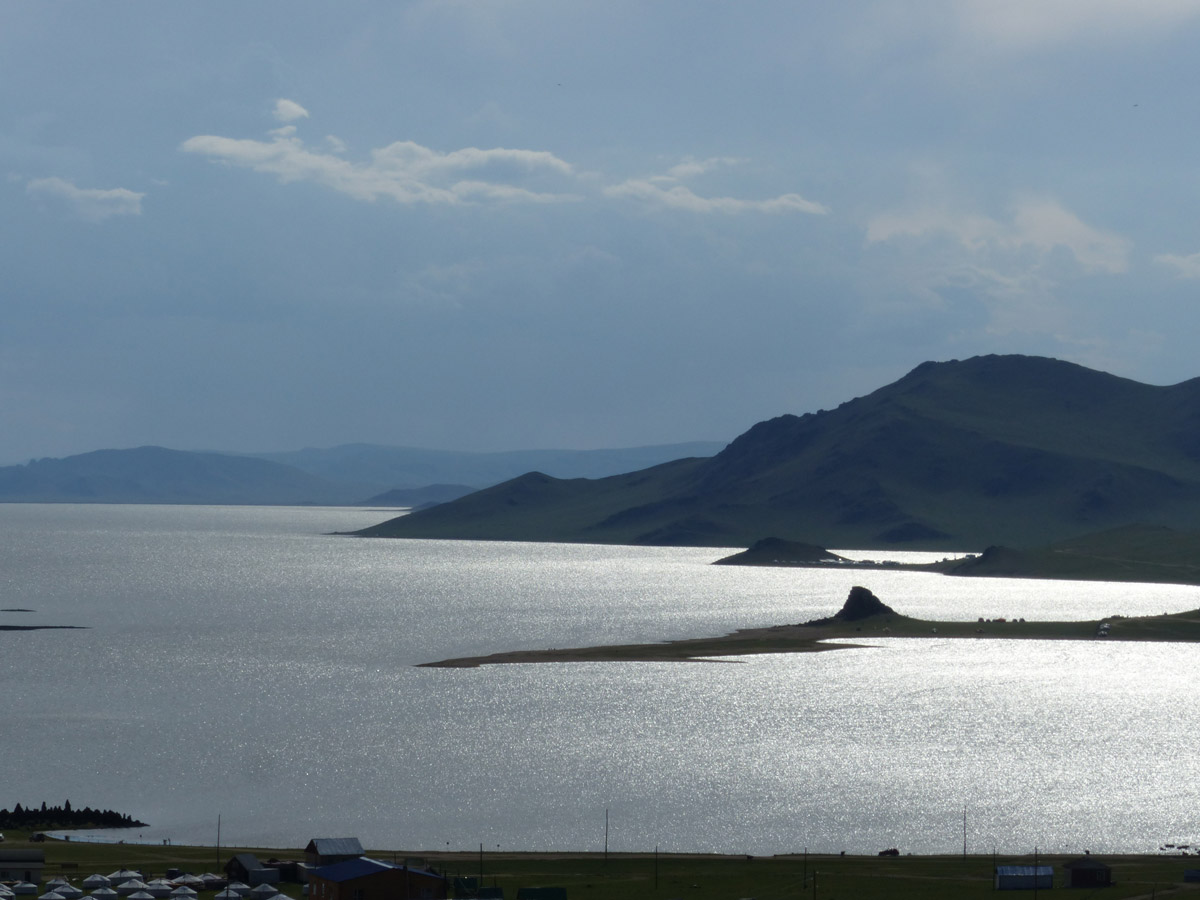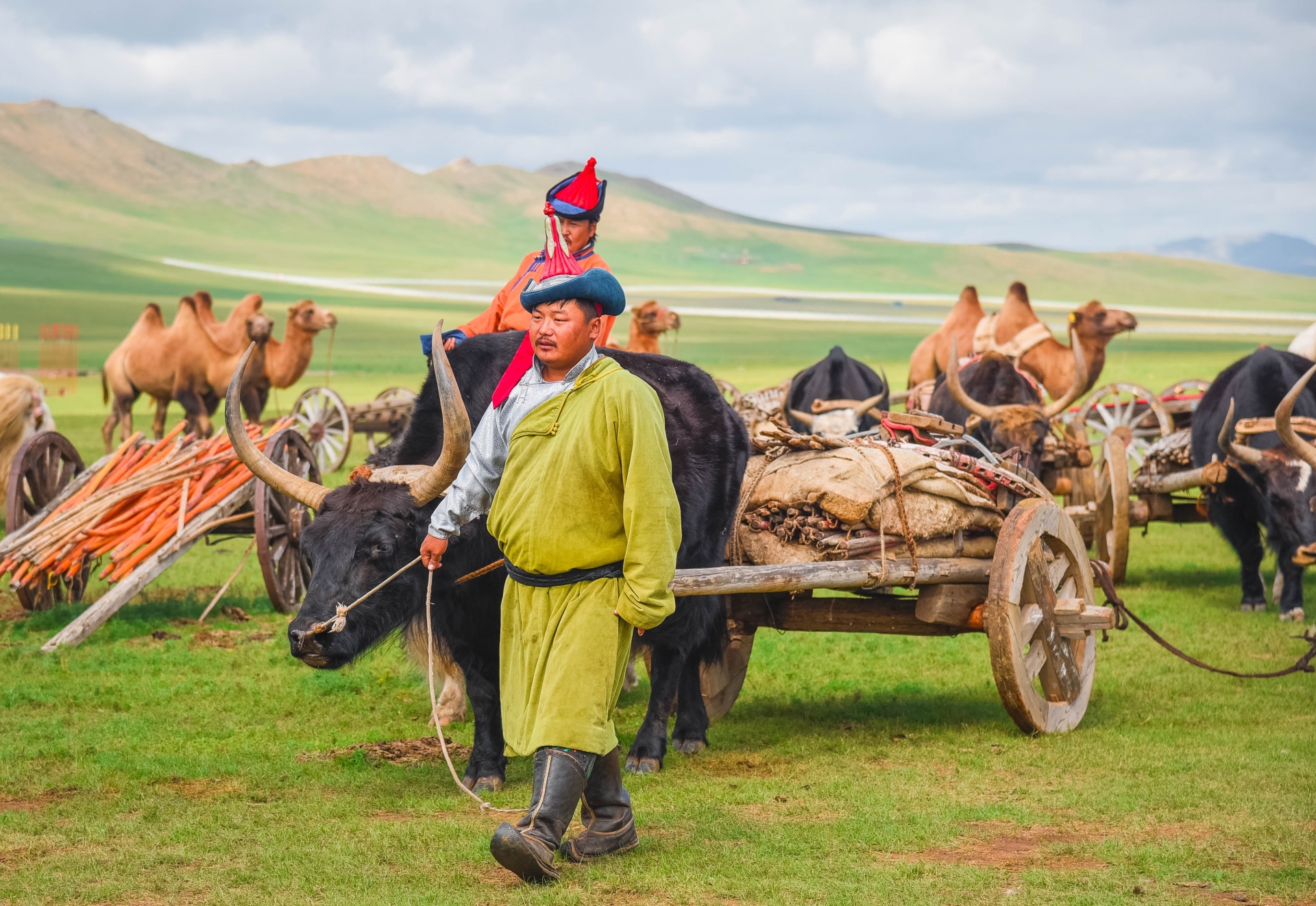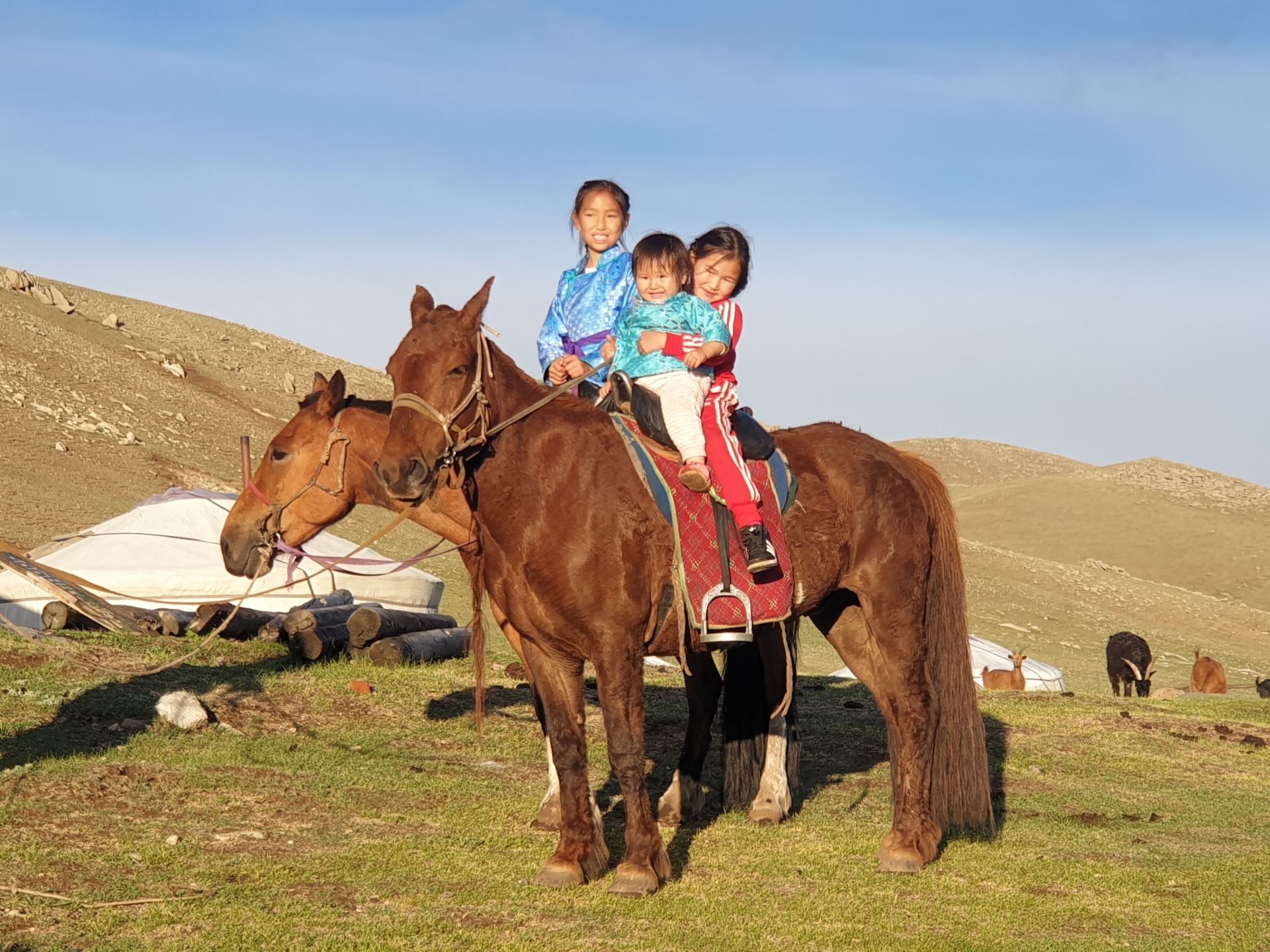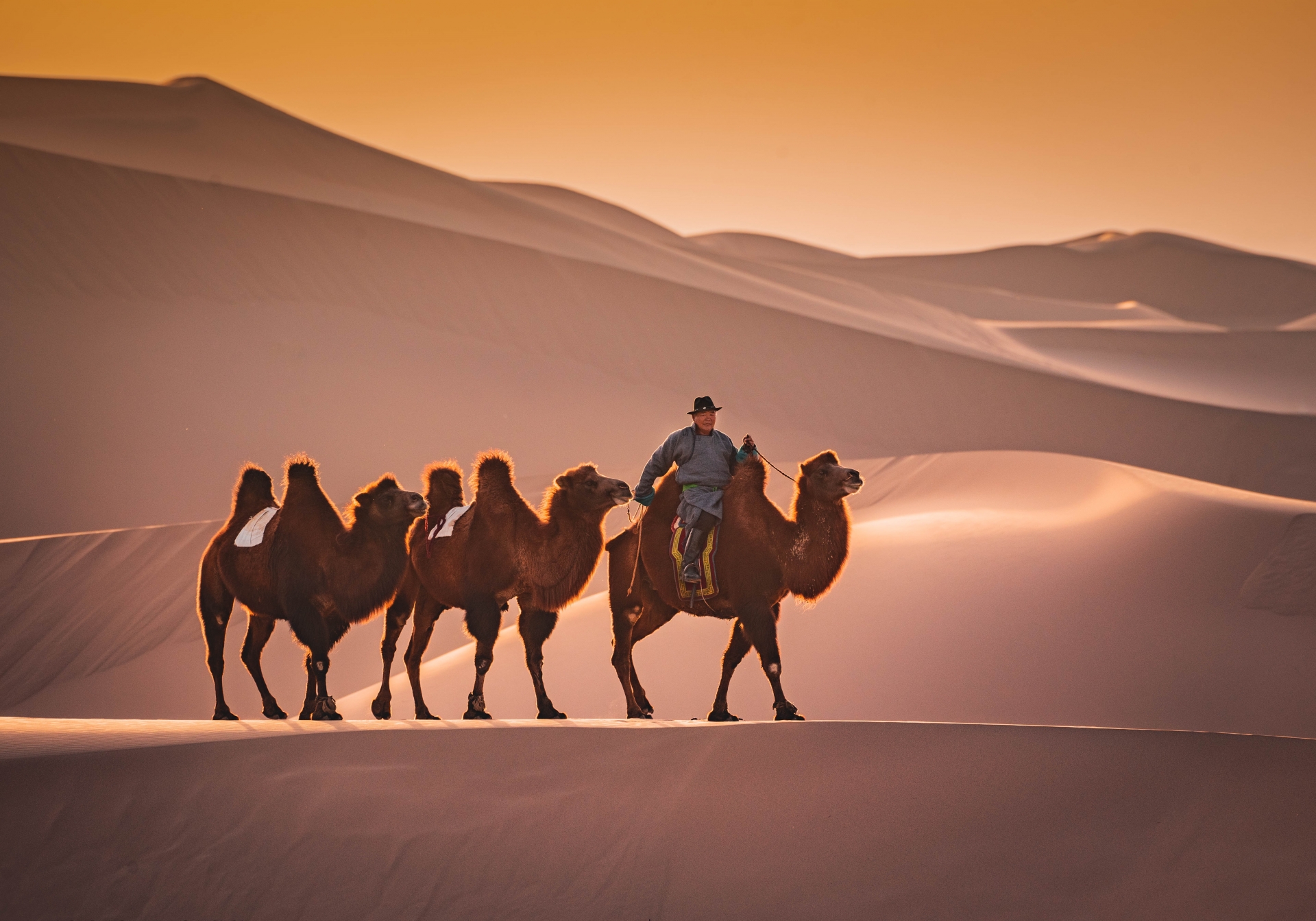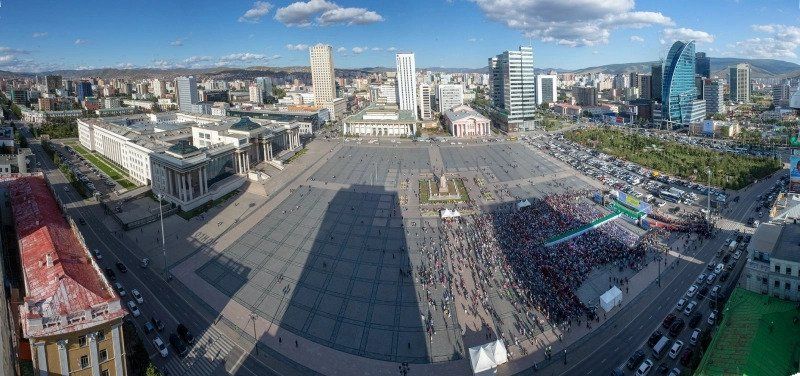Main Text
Central Mongolia was the heart of the Great Mongol Empire.
The vast grasslands of Central Mongolia is where the first official capital, Karakorum, was founded in the 13th century. This place was home to ancient people who engraved rocks and deer stones to document their lifestyle.
KHORGO VOLCANO
Academics have proven that Khorgo was a volcano that erupted twice 9 million years ago and became dormant. Khorgo volcano, 2240 meters above sea level, is the youngest of all the volcanoes in the country. Its prehistoric lava flowed 100 km to the east of the mountain, and to the Suman and Chuluut rivers. The crater slopes at about 50 degrees, its depth is about 100 meters, and its diameter is 300-400 meters. Inside the crater you may see large stones, the size of tables and chairs. Between the trapped stones of the Khorgo mountain, small cedar trees are growing with plenty of cedar nuts and berries. There are caves too. Three dormant volcanoes Bosgo, Khyar, and Suga are located 20 km from the Khorgo mountain. The Bosgo crater has a crack on its northwest side, and has a lake at its bottom. A rare type of diamond was found near a clay mountain in the area of Khorgo.


BICHIGTIIN KHAD ROCK
Bichigtiin Khad rock in Ikh Bichigt in Bayankhongor province, is full of ancient rock engravings. An image of a man with an ox-drawn harrow shows that people used animals to plough and cultivate the land 3000 years ago. Many places in Mongolia such as Khoid Tsenkher Cave in Khovd province, Tevsh mountain in Uvurkhangai province, and the Tsagaan river in Gobi-Altai province have similar rock inscriptions left by ancient people. Though these paintings are rather primitive and do not show things in sequential order, they are amazing stone records that tell us about their creators' lifestyle and mentality.
NATURAL HERITAGE OF HUMANITY – ORKHON VALLEY
A must-see place for those who want to walk the trails of the Mongolian Empire’s glory and fall, is the Orkhon Valley Protected area. The Ulaan Tsutgalan Waterfall, ruins of Karakorum built in 1220 by Chinggis Khaan, Erdenezuu monastery and its 108 stupas, and Tuvkhun monastery on top of a mountain – are all located along the Orkhon river. The valley is 360 km from Ulaanbaatar. For thousands of years, this area was the center of powerful empires. A stone statue with inscriptions dedicated to Bilge Khan of the Turkic Empire is the oldest remaining relic that proves their history. Once you’re in the soum center, you can visit the Karakorum Museum that contains excellent artifacts such as the king’s crown, gold, and silver crafts found in this area.
TERKHIIN TSAGAAN LAKE
Locals say some visitors who came to the eastern shore of this lake gasp, “look at that huge white lake!” and so it was named Terkhiin Tsagaan Nuur (“huge white lake”). A small island in the lake is inhabited by birds that build their nests and lay their eggs. Black geese and seagulls dive at depths of up to 5 meters to catch pike. In 2011, CNN named Terkhiin Tsagaan lake as one of the world’s best tourist destinations.
The lake is surrounded by the Khangai mountain range and more than 10 rivers, including the Terkh, pour into the lake while Suman river flows out.
TUVKHUN MONASTERY
The first reincarnation in Mongolian Buddhism, Undur Gegeen Zanabazar, chose this area as a place for meditation because of its uniqueness in 1648 when he was just 10 years old. He ordered the construction of a small, stone house on a 30 meter tall rock hill. In that house he created his sculptures and paintings. This place was forgotten about during the war, but was restored in 1773 as Tuvkhun monastery.


URAN TOGOO VOLCANO
On the way from Khutag-Undur soum of Bulgan province to Khuvsgul province, there is an extinct volcano Uran Togoo. As the crater is cracked on the northeast, south, and northwest sides it resembles a trivet. The volcano was active 20 to 25 thousand years ago. A legend says that food, which comes from an area behind Uran Togoo mountain, is particularly delicious as God dropped holy water there. The legend also claims that fermented mare’s milk from the mountain is delicious because God dropped milk there. Inside the Uran Togoo crater there is a 1.5 meter deep lake. Soil around the lake is nutrients rich so you will see dense forests with larch, aspen, poplar, and birch. Many medicinal plants, such as wild onion, thistle, tulip, roseroot, cumin, and astragal grow there.
NAIMAN NUUR (EIGHT LAKES)
Naiman Nuur National Park /Eight Lakes/. is located in the province of Ovorkhangai, in the Khangai range, and it has the typical landscapes of the Mongolian high mountains with their large forests of larches. The area of Naiman Nuur, ”Eight lakes”, formed behind the volcanic eruptions that occurred all along the centuries. The eight lakes in question are Shireet, Khaliut, Bugat, Khaya, Shanaa, Khuis, Doroo and Bayan.


